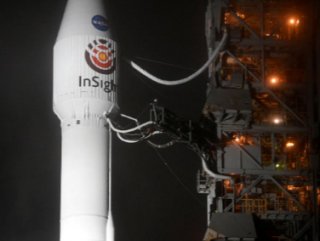NASA’s robotic probe InSight has detected and measured what scientists believe to be a “marsquake,” marking the first time a likely seismological tremor has been recorded on another planet, the Jet Propulsion Laboratory in California reported on Tuesday.
IMPORTANT DEVELOPMENT
The breakthrough came nearly five months after InSight, the first spacecraft designed specifically to study the deep interior of a distant world, touched down on the surface of Mars to begin its two-year seismological mission on the red planet.
The faint rumble characterized by JPL scientists as a likely marsquake, roughly equal to a 2.5 magnitude earthquake, was recorded on April 6 – the lander’s 128th Martian day, or sol. It was detected by InSight’s French-built seismometer, an instrument sensitive enough to measure a seismic wave just one-half the radius of a hydrogen atom.
“We’ve been collecting background noise up until now, but this first event officially kicks off a new field: Martian seismology,” InSight principal investigator Bruce Banerdt said in a news release.
Scientists are still examining the data to conclusively determine the precise cause of the signal, but the trembling appeared to have originated from inside the planet, as opposed to being caused by forces above the surface, such as wind.
“The high frequency level and broad band is very similar to what we get from a rupture process. So we are very confident that this is a marsquake,” Philippe Lognonné, a geophysics and planetary science professor at University Paris Diderot in France and lead researcher for InSight’s seismometer, said in an email.
